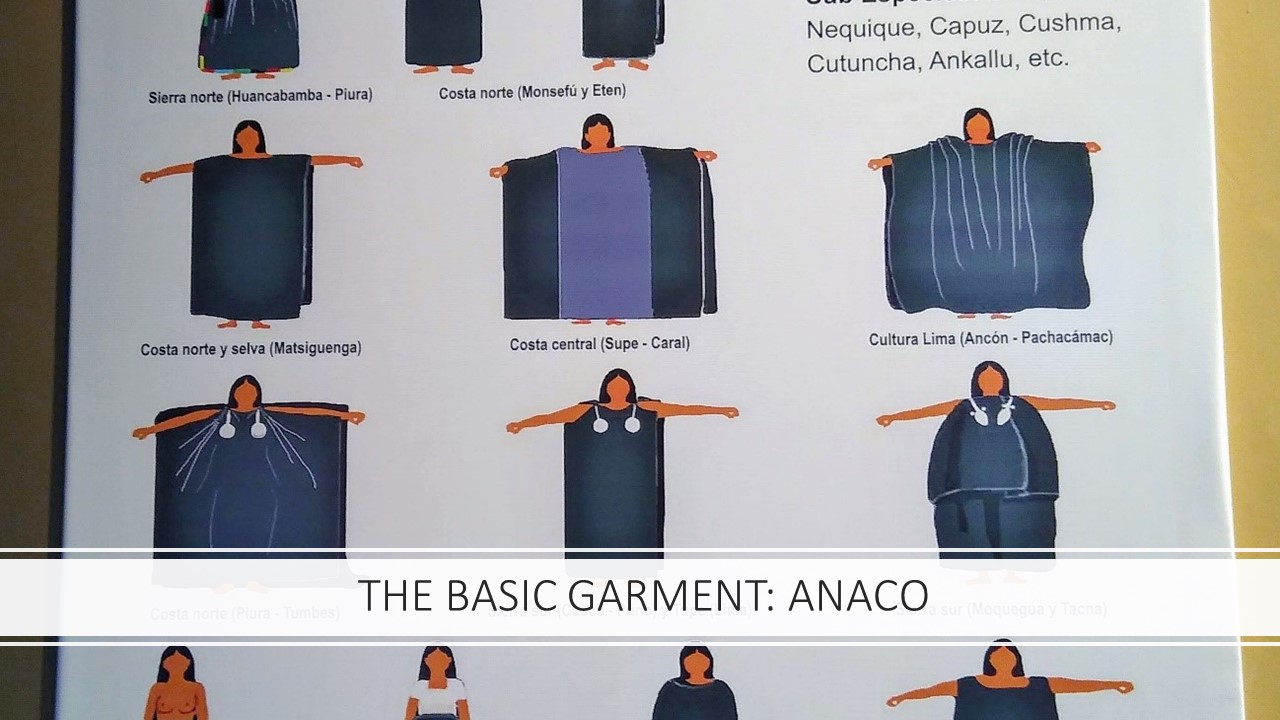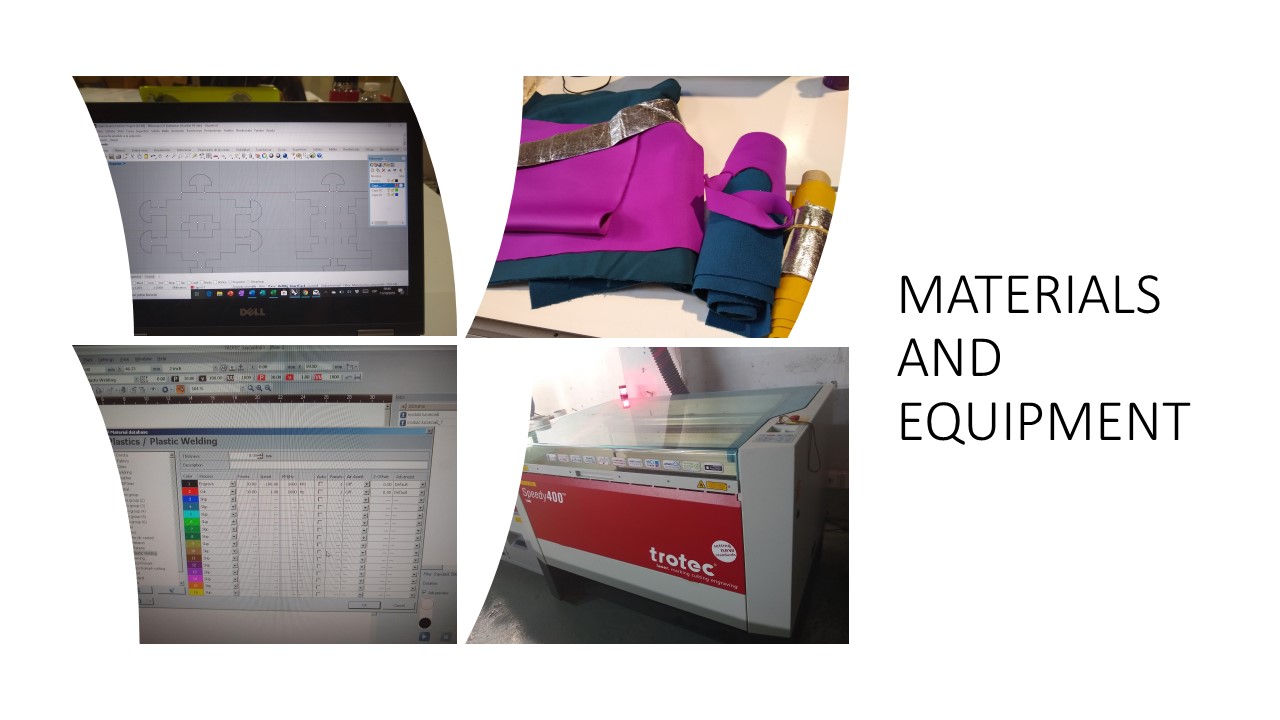3. Circular Fashion¶
The project has focused in the organic and geometrical iconography of Peruvian Ancestral Cuttures. As an engineer experiencing such an enjoyable transformative journey as designer, I share Architechs vision: garments as the closest ecosystem that sorround humans and that Openess is the tool of innovation. The Tessellation design includes male and female pieces that were made in two different colors of fabric (Cian Blue and Fucsia) and linked with a Silver Piñatex string to emulate ancestral weaving patterns. The male pieces additionally had a laser engrave which has a KENE (Shipibo Iconography) pattern. The resulting fabric could be part of a possible multifunctional garment such a cape, scarf, belt or blanket. Since pieces can be assembled like a puzzle the final garment could be completed with other type of fabrics by upcycling different type of textiles.
The Inspiration¶
Main inspiration was the geometrical iconography that is present in Inka and Pre Inka garments. The oldest garment known in my country Peru is called Anaco, and the royal garment
for the Inka was called Uncu. This garment used to have an exclusive iconography drawn and designed in square shapes called “Tocapus”. I have been also fascinated by the geometrical
paths of the Amazonian cultures such Shipibo Conibo and Yanesha. It’s amazing how these cultures new about Tessellation, as well as, Islamic cultures.
Yanesha and Shipibo Culture are 02 of the 50 native Peruvian cultures that are still living in Peru. While Incas included 190 colors in their designs. Yanesha’s have a less variety of colors which are in general a cold palette, Shipibos contemporary designs use a wider variety of vibrant colors than Yaneshas. Shipibo Patterns are more organic than Yanesha ones, but what they do have in common is their great sense of symmetry, they try to display their perception of the Infinite through their repetitive and continuous patterns and that's were Tessellation takes place.
In Yanesha thought, a strong connection exists between body and clothing. Although Yanesha people use the term chetsots (flesh) to refer to the body, at another level they conceive of the body as a tunic that cloaks the noncorporeal aspects of Self, that is, one's vitality {camuequenets) and one's shadow soul (choyeshe'mats). This is related to their belief that those items of personal clothing and ornamentation with which a person is in closest contact become "ensouled" and thus grow to be an extension of one's body would put it, an "extra-somatic body part." Archaeological and historical evidence confirms that the interaction between Yanesha and Andean peoples at the time of contact was intense.
THE CUSHMA: the clothing of the Yanesha woman is composed of a robe called Cushma. As accessories, bands and bracelets are used.
It is customary to have a painted face and bare feet. Every day every woman painted her face, drawing different designs that represent her
relationship with nature. The design called ‘oñet’, in the Yanesha language, symbolizes water waves, while ‘huamprat’ represents ’the great
snake’.

Shipibo Embroidery Pattern that inspired my Open Source Project¶
Shipibo Embroidery Meaning from Majavierr on Vimeo.
Geometric Patterns as Possible Ancestral Peruvian Writing:¶
They find indications that writing already existed in Peru 4,500 years ago, the president of the APAR (Peruvian Association of Rock Art), has been focusing on these petroglyphs since 2009 and defends that this writing system would have links with ancestral traditions in the Amazon. To decipher the code, consider that the key is in the millenary knowledge of the Amazonian peoples, such as the Yaneshas. If the chronology is confirmed, we could say that in Peru there was writing almost five millennials ago, at the same time as in Sumer or Egypt.
Goal to Achieve¶
 A contemporary Anaco (Peruvian garment), atemporal and convertible inspired by the geometric paths which are predominant on Peruvian Amazonian Native cultures (Shipibo Conibo), which make an statement in regards of environmental awareness. Also, each piece will be connected by a thread that simulates the ancestral pre Hispanic knitting process in waist loom (tejido en telar de cintura).
A contemporary Anaco (Peruvian garment), atemporal and convertible inspired by the geometric paths which are predominant on Peruvian Amazonian Native cultures (Shipibo Conibo), which make an statement in regards of environmental awareness. Also, each piece will be connected by a thread that simulates the ancestral pre Hispanic knitting process in waist loom (tejido en telar de cintura).
Materials and Tools¶
-Software Rhinoceros V. 6.¶
-Laser cutter machine Trotec Speedy 400¶
-Fabric, which we must select according to the pattern we had created. I selected 2 different type of synthetic textiles colors one for male and female pieces.¶
-Silver Piñatex Vegan Leather¶
-Paper, colors, pencils and stepper kit and rules¶
-Recommended Safety Precautions: When user laser cut machine make sure the extractor system is one. Wait 30 seconds after the laser cutting is done¶
before you open the laser cutter door.
Useful Links:¶
- Exploring Peru
- El Hilo Conductor (Thread Conector Peruvian Tradition and Fashion) Tradición y Moda en Perú by Olga Zaferson Aranzaes.
- Hybrid Bodyscapes: A Visual History of Yanesha Patterns of Cultural Change, Santos-Granero, Fernando
- Colores Historia de su significado y fabricación by Anne Varichon.
- Tesis para optar el Título de Licenciado en Antropología que presenta: Ernesto Velarde Naranjo, 2018 (Re) Producción de imaginarios de lugar a través de festivales musicales: El caso de Oxapampa y la música country.
- 02/02/2015 15:14:01 Hallan indicios de que ya existía la escritura en Perú hace 4.500 años
Circular Fashion Project Images and Videos¶
Fabrication: laser cutting, workflow, assembling, material used and leftovers¶
-Recommended Safety Precautions:¶
- Do not open de laser cutter door inmmediately to protect yourself from toxic gases or vapors.
- Make sure you turn on the extractor before starting the cutting process.
- Do not forget to turn off the lasr cutter after you finish your work.
- If the laser cutter pointer starts sparkling, turn off the cutter and revise laser cutting parameters such PROCESS, POWER,SPEED and PPI/Hz.
Conclusions¶
- The selection of materials and textures must reinforce the concept of the design, but also keep in mind the main required specifications of the sustainable fashion garments or accessories: fit, durability, quality and pricing.
- Main challenge was to adapt the number of objects to be laser printed in such a way that the amount of waste could be reduced and minimized.
- A proper documentation of any design must include anthropologic, ethnographic, sociographic, biotechnology and neuroscience sources of information and data.
- The fabric pattern that has been created could have difference applications: It could be used in fashion garments and accessories, as well as, home deco item such carpets, wallpapers, carpets, pillows, bed covers; etc.
- First prototype outcome only shows the fabric pattern I do have in mind but I am still working in the way this can become a pattern that can be used in an accessory which is a modern skirt that can be converted in a scarf or poncho.
- After visiting Materfad on Oct 28th, 2019 I might want to do some test in regards of alternative materials that can provide to this prototype additional smart clothing features such Basalt Knitted Fabric (Tejido de fibra de Basalto), due to its high performance: thermal, non-combustible, resistant to fire and electromagnetic radiation.
Main References¶
SERPENTS AYAHUASCA by TAS¶
serpents ayahuasca (shipibo patterns) by TAS from TAS Visuals on Vimeo.
Matija Cop¶
Subject 16 | Matija Cop from Dann Parry on Vimeo.
Future Fashions¶
FUTURE FASHIONS // Directed by Heleen Blanken from heleen blanken on Vimeo.


